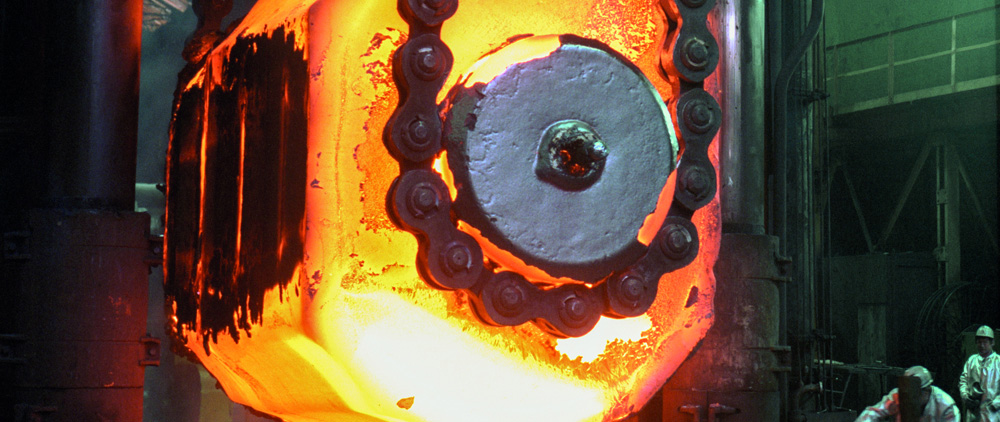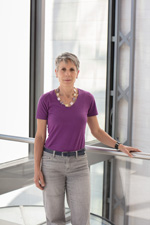
Progress as a Promise. Industrial Photography in Divided Germany
Carola Jüllig | 15. Februar 2023
The exhibition “Progress as a Promise. Industrial Photography in Divided Germany” juxtaposes commissioned photographs from East and West Germany of selected branches of industry in the time between 1949 and 1990 and explores the purposes they served. Carola Jüllig, head of the photography collection, describes the acquisition activity of the museum in the area of photography and explains the concept of the exhibition, which takes its place in the long tradition of photo exhibitions in the DHM.
The Deutsches Historisches Museum has been collecting photographs since its founding in 1987. Alongside prints by photographers working in the area of art and culture and works of social and political relevance, the Photography Collection also includes a number of archives of commercial photographers from the German Democratic Republic (GDR).
In the 1990s, the museum was able to acquire the archives of Martin Schmidt (1925–2018) and Kurt Schwarzer (1927–2012), who worked in the GDR as freelance photographers for various outlets. In 2017, we acquired the estate of Uwe Steinberg (1942–1983), who worked as a photojournalist, primarily for the “Neue Berliner Illustrierte”. This was followed in 2019 by the archive of Peter Straube (born in 1936), who had been employed by the magazine “DDR-Export” and other publications. And finally in 2020, the museum secured the estate of the photojournalist Joachim Fieguth (1942–2019), who had worked for the “Berliner Zeitung” since the 1970s and also for “Neues Deutschland” for many years. For a long time, our perspective on the photography of the GDR was largely determined by the kind of critical, documentary-style, black-and-white pictures by photographers like those represented in the photo agency Agentur Ostkreuz. However, these photographs are only part of the visual memory, because it is precisely the mass of photos published in newspapers, magazines, brochures, and so on, that have inscribed themselves in the collective memory. It has long been of great importance to me to preserve these photos from oblivion or obliteration, because not many museums collect them.
And for this reason the emphasis of our collection on the topic of “commercial photography” has often been the starting point for photo exhibitions: In 2014, the museum presented “Colour for the Republic. Commissioned Photography of Life in the GDR”, a selection of colour photographs from the archives of Martin Schmidt and Kurt Schwarzer that showed the important role that colour photography played from the 1960s on in communicating socialist ideology. The exhibition “The Invention of Press Photography. From the Ullstein Collection 1894–1945” in 2017 dealt with press photography based on the example of the German magazine with the widest circulation, the “Berliner Illustrierte Zeitung”, published by Ullstein Verlag. And in 2019, the early press photography of the photographer Stefan Moses (1928 – 2018) was featured in the exhibition “The Exotic Country”. In all of these exhibits, the main focus of interest was on photography as material, its use, and its contextualisation.
Commercial and commissioned photography, like artistic “auteur” photography, is an independent genre, whereby its producers were often active in both areas: art photography also has a commercial side.
The current exhibition “Progress as a Promise. Industrial Photography in Divided Germany” concentrates on commissioned photos from West German companies and East German publicly owned enterprises (VEBs) and shows motifs from the production of the steel, chemical, textile and automotive industries and their publication in various industrial print media. Commissioned photography with a mission: it served as a form of representation and transported the narrative of a better future thanks to technological progress – in West and East. The impressive scenes presented in the almost 700 objects – vintage prints, modern enlargements from negatives or slides, company magazines, business reports, production catalogues, commemorative publications, or lavish picture books – tell of a time when an unbroken belief in progress still prevailed, when smoking chimneystacks were a sign of economic might, when synthetic fibres and clothes were the materials of the future, and the mass motorisation of German citizens was the measure of the “economic miracle”.
Perhaps the most amazing realisation in observing these photographs: it is often not possible to recognise whether they picture a West German or an East German enterprise. The steel flowing from a Krupp blast furnace is as visually stunning as that in the Ironworks Combine East, and the laboratories of the chemical industry with their mysteriously shimmering Erlenmeyer flasks look no different in Leverkusen than in Leuna. Herein lies the dilemma of industrial photography: it can never be really innovative, because its imagery must be comprehensible and orient itself on traditional motifs that already became fixed in the early days of industrial photography. It is only in the contextualisation that it becomes evident that the pictures are promoting the production method of a West German corporation or the planned economy of a VEB.
The photos in the exhibition were made in part by photographers employed by the companies (for the most part men) who had to do with internal communications and in part by freelance photographers who were often commissioned to work for special publications. In the exhibition we therefore often find photos by (still) nameless company photographers alongside well-known names like Ludwig Windstosser and Robert Häusser in the Federal Republic or Wolfgang G. Schröter and Eugen Nosko in the GDR.
The exhibition can only offer an initial view of the broad field of commissioned industrial photography. There is still a great deal more worthwhile material in the archives, which can shed light on further topics.
|
Foto: DHM/Thomas Bruns |
Carola JülligCarola Jüllig is head of the photographic collection and postcards at the German Historical Museum. |
